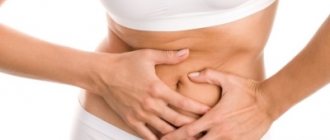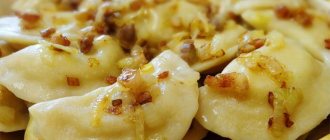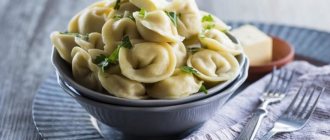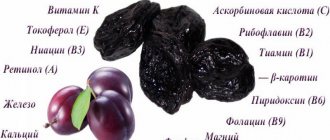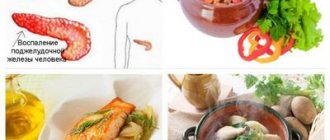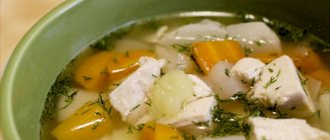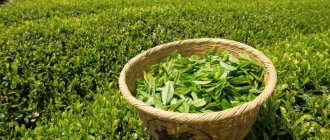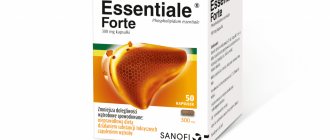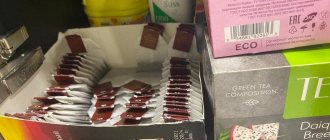When diagnosing pancreatitis, doctors advise the patient to give up many of his favorite foods. Most sweets are also prohibited. Some fruits can easily replace your favorite desserts for a sick person. Persimmon for pancreatitis is one of the best options. This is a very sweet, juicy fruit with a delicate texture. But you need to consult with a specialist about which fruits are best to choose, how and when to eat them if you have inflammation of the pancreas.
Persimmon and its beneficial properties
This fruit is extremely rich in beneficial substances that have a number of beneficial effects on all human organs and systems:
- Elimination of edema, removal of fine sand from the kidneys in case of urolithiasis is carried out due to the diuretic effect. It develops with regular consumption of persimmons containing large amounts of water.
- Beneficial effects on the condition of the retina, eye muscles, that is, improved vision due to vitamin A.
- Antioxidant effect, prevention of the development of malignant neoplasms, rejuvenation of the body due to the presence of vitamins A, C, E.
- Binding, removing toxins and poisons from the body formed as a result of inflammatory, tumor and other pathological processes thanks to the pectin and plant fiber present in the fruit. These same substances help reduce cholesterol, improve the composition of intestinal microflora, reduce gas formation in the intestines, and normalize stool.
- Antibacterial effect: destruction of pathogenic microorganisms thanks to the plant acids present in persimmons.
- Improving blood composition, treating iron deficiency anemia: persimmon has a fairly high content of iron and other trace elements involved in hematopoietic processes.
- The presence of iodine helps to normalize the secretion of thyroid hormones and improves the condition of a person diagnosed with hypothyroidism.
- Beneficial effects on the condition of the heart muscle and blood vessels due to the beneficial microelements contained in the fruit (potassium, magnesium, calcium).
- Increasing immunity, especially in winter and spring, when the risk of developing vitamin deficiency is increased. Persimmon contains a lot of vitamins and microelements that are involved in all metabolic processes, increasing the body's defenses to fight infections.
- Improving the functioning of the nervous system: normalizing sleep, improving mood, reducing dizziness and headaches. This is achieved by the presence of B vitamins in the fruit.
Diet rules
The goals of following a diet for fatty hepatosis are:
- regulation of all liver functions,
- normalization of fat and cholesterol metabolism,
- stimulation of bile production, which is involved in the digestive process
- creation of a glycogen depot in the liver, which has a beneficial effect on the supply of glucose to the body.
Thus, the diet for fatty hepatosis is designed to expel excess fats from the liver.
Treatment table according to Pevzner - No. 5 (liver diseases) and No. 8 (obesity).
In modern standards of therapeutic nutrition (2017), a diet for fatty hepatosis refers to a variant of a standard diet with a reduced calorie content and a high protein content (in case of malnutrition).
General characteristics of the treatment table (per day)
- the energy value of the diet is 1340-1550 kcal,
- carbohydrates 130-150g;
- fats 60-70 gr., of which up to 50% vegetable,
- whites 70-80g, or 110-120g. in case of depletion, at least 50% of them are of animal origin.
Diet . The number of meals should be frequent, 4-6 times a day (fractional principle). Small meals help fight hunger, prevent overeating and activate metabolism.
Important! You should give up your intentions to quickly lose weight or fast, as this harms the functioning of the liver.
Drinking fluids . Every day it is necessary to consume at least 1.5 liters of free liquid, with the help of which harmful metabolic products are removed from the body. This can be non-carbonated mineral water, herbal teas, fruit drinks, freshly prepared juices.
Salt . You should limit your salt intake to 6 g per day. Excess salt retains fluid in the body, causes swelling, which adversely affects the quality of bile (it becomes thick and viscous).
Eating protein . Daily protein consumption should be at least 100 grams, which is necessary to activate metabolic processes, accumulate glycogen in the liver and normalize fat metabolism.
Fats . The daily fat content in the diet should not exceed 70 grams. More than half of the agreed amount should be vegetable fats. Limiting the consumption of animal fats normalizes the functioning of the liver and digestive tract as a whole, helps the liver “lose weight,” that is, get rid of the fats accumulated in it.
Temperature regime . The food temperature for fatty hepatosis is 15-60 degrees. Avoid eating too hot or cold foods, as they irritate the gastric mucosa and aggravate indigestion.
Alcohol . If you have fatty hepatosis, you must completely stop drinking alcohol, especially strong alcoholic drinks. As you know, the destruction of alcohol occurs in the liver, and drinking alcoholic beverages creates unnecessary stress on the diseased organ.
How to choose persimmons in the store?
When choosing this product in a store or market, you must adhere to several rules to avoid harm to the pancreas and the entire body:
Precautionary measures
Introducing any foods into the diet for pancreatitis should be done carefully. When consuming persimmon, the following factors are important:
- Choose soft and ripe fruits that do not knit.
- Eat only the pulp, do not touch the skin.
- Do not eat fruit on an empty stomach.
- If possible, choose varieties with the lowest sugar content.
- Do not eat cold fruits - all food should be warm or at least room temperature.
For pancreatitis, it is better to start introducing persimmon into the diet not fresh, but after heat treatment. This could be a prepared drink or baked fruit. It is better to choose the second option in order to clearly control the amount of food eaten. To start, just eat 1 tsp. baked fruit. If there is no negative reaction, the next day you can include half the fruit in your diet, and then the whole one. Then you can switch to fresh fruit, but start with a small slice.
As fruits ripen, the glycemic index increases - you should not eat overripe fruits, they contain a maximum of sugar
Doctor's advice: should you include persimmon in your diet if you have pancreatitis?
Judging by the reviews of many experts, persimmon is an extremely healthy fruit that saturates the human body with many useful substances (vitamins, minerals). Nutritionists, gastroenterologists, endocrinologists, oncologists and other specialists recommend eating persimmons regularly for both adults and children. But there are several contraindications for consuming this fruit:
- diabetes,
- obesity,
- individual intolerance, allergic reactions to orange, yellow fruits, vegetables,
- intestinal obstruction,
- exacerbation of chronic diseases of the gastrointestinal tract (stomach ulcers, gastritis, pancreatitis, cholecystitis and others),
- children's age up to 1.5 years.
The use of persimmon for pancreatitis and other diseases of the gastrointestinal tract is not prohibited. This fruit is one of the permitted foods, as it brings many benefits to the body. It helps improve the functioning of all organs and systems, healing damaged pancreatic tissue. But nutritionists recommend eating persimmon only during the stage of remission of the disease. Since in acute pancreatitis it can worsen the patient’s condition and cause dangerous complications such as pancreatic necrosis and diabetes mellitus.
Variety "Korolek" for inflammation of the pancreas
An interesting and tasty variety of persimmon is the kinglet - a fruit that is grown from a male flower. The main differences between the berry and ordinary persimmon are:
- low calorie;
- sweeter taste;
- dark color;
- lack of an “astringent” aftertaste.
The wren contains exactly the same beneficial vitamins that persimmon contains. Thus, the fruit consists of a high percentage of ascorbic acid, various trace elements, it is filled with iron, phosphorus and potassium.
Korolek for pancreatitis is used according to the same rules as its other varieties. The fruit is not recommended for patients with intestinal obstruction. The berry requires a person to observe moderation, because from excess berries you can get kidney stones and sometimes excess weight. Also, the product often causes allergies, so consumption by children should be kept to a minimum, and due to the high sugar content, it can lead to diabetes.
The choice of one or another variety of fruit depends on individual preferences, because the benefits and harms in both cases are identical. Those who prefer sweetness and lack of viscosity should pay attention to dark, brown fruits, while others should pay attention to bright and orange ones.
General dietary recommendations for liver diseases
Long-term diet - 1.5 - 2 years
Small meals 5-6 times a day, every 3-4 hours
Daily food ration is up to 3.0 kg per day for obesity - up to 2.0 kg.
Calorie content 3000 kcal per day, for fatty liver disease due to obesity - 1800-2500 kcal/day or 30 kcal/kg body weight per day
Table salt 8-10 g, for portal hypertension and ascites - 4 g per day
The amount of fluid is up to 3.0 l per day, with ascites up to 1.0 l (under the control of diuresis)
Cooking methods - boiling, steaming, stewing in water or vegetable broth with juice removed, baking in the oven at a temperature of no more than 180 degrees. Meat and fish dishes are baked after boiling. Flour, crackers and vegetables are not sautéed; batter is excluded. Butter and vegetable oils are added to ready-made dishes. Yesterday's bread. Eggs are used for cooking, mainly as protein. Puréed food according to indications.
| Biologically active substance | Food sources |
| Protein 100-110 per day. For hepatic encephalopathy up to 40 g per day or 0.6/kg body weight per day | Low protein content: vegetables (0.8-4.0g)*, fruits (0.4-2g), milk, kefir (2.8g), cottage cheese (14-18g), cheeses (23-28), butter ( 0g), egg (1 piece - 6.3g). High protein content: bread, pasta, cereals (7-11g), sausages (10-12g), fish (16-18g), beef, veal, poultry, rabbit (18-20g), pork (12-14g) , legumes (21g), nuts (16g). *-protein content per 100 g of product, for all values |
| Fats 80-140g per day, of which 70% animal and 30% vegetable fats. For fatty liver, up to 80g per day. When the outflow of bile is delayed up to 150 g, of which 50% are plant-based. For jaundice, up to 50-70g per day. | Low fat content - vegetables, fruits (except olives, avocados); low-fat bread, pasta, cereals, skim milk, cottage cheese, kefir, meat (poultry breast, lean beef), fish (cod, ice cod, hake); egg white, legumes (beans, peas, beans, lentils). High fat content - butter or vegetable oil, fatty meats, poultry, fish, lard, smoked meats, fatty dairy products, cheese, ice cream, butter bread, confectionery, baked goods. |
| Carbohydrates 400-450g, of which simple carbohydrates 50-100g, do not combine with fat. For obesity - 250-300g per day | Simple carbohydrates - glucose, sugar, malt, milk sugar, fruit sugar. Complex carbohydrates - digestible (grain and potato starch) and indigestible fiber, hemicellulose and pectins. |
Exclude:
- Fresh bread, rye bread, puff pastry and pastry, pies, cakes, biscuits, cookies
- Fatty meats (pork, lamb, duck, goose), liver, kidneys, brains, pork, lamb, beef fat, margarine, cooking fats, fatty fish (beluga, chum salmon, sturgeon, stellate sturgeon), salted fish, fried foods and grilled
- Meat, fish and mushroom broths, okroshka, green cabbage soup, solyanka
- Smoked meats in any form, sausages
- Fat cottage cheese, salty and spicy cheese, ice cream
- Hard boiled and fried eggs
- Legume mushrooms, sorrel, spinach, radish, radish, onion, garlic, sauerkraut, sour fruits and berries, fiber-rich fruits, nuts
- Canned food, pickled vegetables and other marinades
- Mustard, pepper, horseradish, spices
- Chocolate, halva, black coffee, cocoa
- All alcoholic drinks, beer
- Carbonated drinks, kvass
Recommended:
- Day-old bread, crackers, dry biscuits, biscuits
- Lean meats - beef, rabbit, poultry - chicken, turkey and fish - pike perch, cod, bream, perch, navaga, silver hake, jellied river fish with gelatin, boiled beef tongue
- Doctor's sausage, milk sausages, low-fat ham, soaked herring
- Milk and fermented milk products, low-fat cottage cheese, cottage cheese casseroles, cheesecakes, lazy dumplings, soufflé, mild cheeses
- Friable and semi-viscous porridges from various cereals (oatmeal, rolled oatmeal and buckwheat) prepared with water and with the addition of milk, puddings, boiled noodles, pasta, casseroles and side dishes from cereals and pasta
- Milk soups, vegetable broth with cereals, pasta and vegetables, fruit borscht, beetroot soup, fresh cabbage soup
- Eggs 1 pc or 2 whites for preparing a protein omelet per day, protein omelettes - 2, 3 times a week
- Butter and vegetable oil are added to prepared dishes without frying, butter 25-30 g and vegetable oil 30-50 g per day
- Vegetables, vegetable juices, vegetable side dishes - cauliflower, broccoli, carrots, pumpkin, zucchini, potatoes, artichokes, fennel, celery, green peas, green beans and onions (after boiling)
- Small quantities of parsley and dill, bay leaf, cinnamon, cloves, vanilla
- Sweet varieties of berries and fruits raw and in dishes, if well tolerated, lemon, black currants, dried fruits - prunes, dried apricots, figs, raisins
- Sugar, honey, jam, jams from ripe and sweet fruits and berries, marmalade, marshmallows, marshmallows, fruit and berry sauces
- Tea and weak coffee with and without milk, rosehip decoction, fruit, berry and vegetable juices, berry fruit drinks, compotes, purees, jelly
